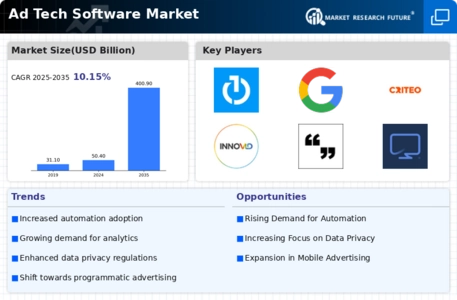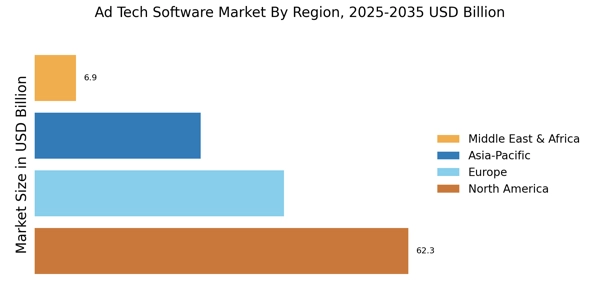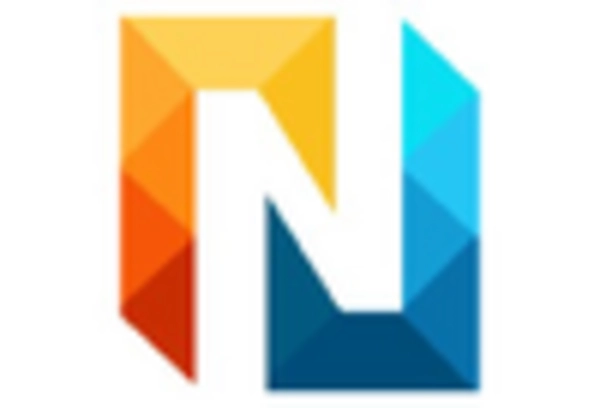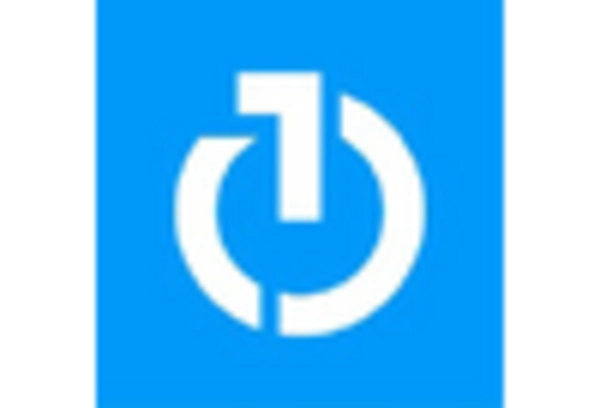Expansion of Mobile Advertising
The proliferation of mobile devices has catalyzed a transformation within the Ad Tech Software Market, leading to an expansion of mobile advertising. With an increasing number of consumers accessing content via smartphones and tablets, advertisers are shifting their focus to mobile platforms. Data indicates that mobile advertising spending is expected to account for over 70% of total digital ad expenditure by 2025. This shift necessitates the development of innovative ad tech solutions that optimize ad delivery and enhance user experience on mobile devices. As a result, companies in the Ad Tech Software Market are prioritizing mobile-first strategies, ensuring that their offerings are compatible with various mobile environments and capable of engaging users effectively.
Emergence of Advanced Analytics Tools
The Ad Tech Software Market is witnessing the emergence of advanced analytics tools that enable advertisers to derive actionable insights from vast amounts of data. These tools facilitate the measurement of campaign performance, audience behavior, and market trends, allowing for data-driven decision-making. The integration of predictive analytics and real-time reporting capabilities is becoming increasingly prevalent, as businesses seek to optimize their advertising strategies. According to recent estimates, the analytics segment within the ad tech sector is projected to grow at a compound annual growth rate of over 20% through 2025. This growth underscores the importance of sophisticated analytics in enhancing the effectiveness of advertising efforts and maximizing return on investment.
Increased Investment in Ad Tech Startups
The Ad Tech Software Market is experiencing a wave of investment in startups that are innovating within the advertising technology space. Venture capitalists and private equity firms are increasingly recognizing the potential for growth in this sector, leading to a surge in funding for emerging companies. In 2025, it is anticipated that investment in ad tech startups will exceed 10 billion dollars, reflecting the industry's attractiveness to investors. This influx of capital is fostering innovation, enabling startups to develop cutting-edge solutions that address the evolving needs of advertisers and consumers alike. As a result, established players in the Ad Tech Software Market may face increased competition from agile startups that are capable of rapidly adapting to market changes.
Rising Demand for Personalized Advertising
The Ad Tech Software Market experiences a notable surge in demand for personalized advertising solutions. As consumers increasingly expect tailored experiences, advertisers are compelled to leverage data analytics and machine learning to create targeted campaigns. This trend is reflected in the projected growth of the programmatic advertising sector, which is anticipated to reach a valuation of over 100 billion dollars by 2025. The ability to deliver personalized content not only enhances user engagement but also improves conversion rates, thereby driving revenue for businesses. Consequently, companies within the Ad Tech Software Market are investing heavily in technologies that facilitate real-time data analysis and audience segmentation, ensuring that they remain competitive in an evolving landscape.
Regulatory Changes and Compliance Requirements
The Ad Tech Software Market is navigating a complex landscape of regulatory changes and compliance requirements that impact advertising practices. As governments worldwide implement stricter data protection laws, such as the General Data Protection Regulation (GDPR) and the California Consumer Privacy Act (CCPA), companies must adapt their strategies to ensure compliance. This shift is prompting a reevaluation of data collection and usage practices within the industry. It is estimated that compliance-related expenditures in the ad tech sector could reach several billion dollars by 2025, as businesses invest in technologies and processes to meet regulatory standards. Consequently, the Ad Tech Software Market is likely to see a rise in demand for solutions that prioritize data privacy and transparency, shaping the future of advertising.


















Leave a Comment